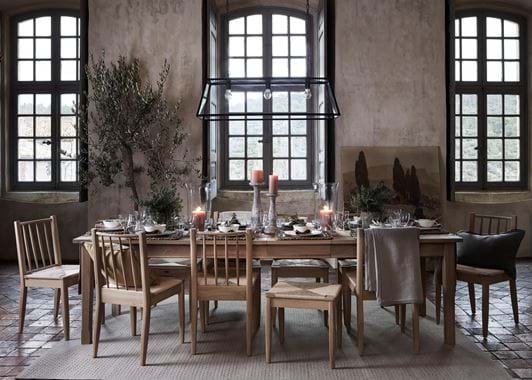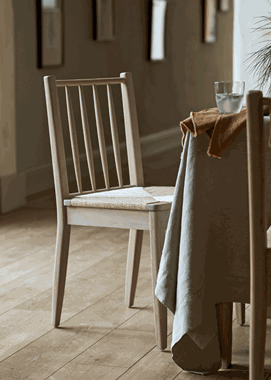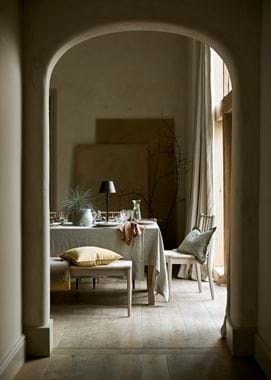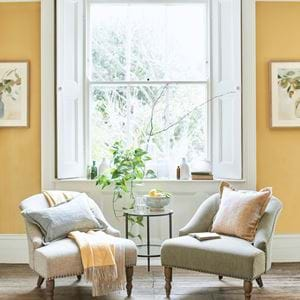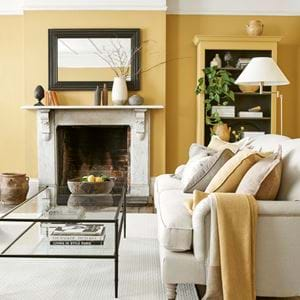From Sussex to Wycombe: the story of our Arts & Crafts chair
From Sussex to Wycombe: the story of our Arts & Crafts chair
Finding its feet in post-Industrial Revolution Britain, the Arts & Crafts movement championed a return to simpler ideals, traditional craftsmanship and a connection to the natural world. Here, we look at the history of one of the movement’s most popular designs, the Sussex chair, and how its influence can be found in our contemporary take, Wycombe.
The story of the Sussex chair is a little bit murky. In the notes that accompany their original example, the Victoria & Albert Museum state that it was ‘possibly designed’ by Phillip Webb. It seems likely, seeing as the chair was sold by Morris & Co. – William Morris’ eponymous company where Webb was both founding member and chief designer. Webb is also best known as the architect of Red House, Morris’ family home in Bexleyheath, and the designer of much of its furniture and interiors, and it’s here that the Sussex chair first makes an appearance in 1860.
Whatever its provenance though, the Sussex chair quickly became Morris & Co.’s most successful design following its introduction to the brand’s collection in 1869. What started out as one carver and one dining chair grew to a whole family of seating designs, from highchairs to settles, and featured in the company’s catalogue well into the 20th century. Its success is unsurprising: it has all the popular hallmarks of the Arts & Crafts style, like the honest use of natural materials (usually ebonised beech and rush), craftsmanship as decoration, the references to domestic country styles of the past (it is, in turn, based on a Georgian example found in Sussex), and its modesty.
They’re all things that appealed to us today, too. The influence of the Arts & Crafts designers can be felt throughout our collection – their principles are very much in line with our own. In fact, the Arts & Crafts belief that every inch of a home, not just the objects in it, should be a cohesive whole, each aspect as in tune with their ideals as the next, is very much the same as our thinking and why we create designs for the whole home. But nowhere is this connection between Neptune and Arts & Crafts more felt than in Wycombe.
The seating in this collection pays homage to the Sussex chair, from its spindles down to its woven seat. But while we’ve been careful to stay true to things like the celebration and appropriate use of natural materials, the humble shape and the traditionally crafted components, we’ve also brought it gently into the 21st century. So, gone is the ebonised wood, replaced instead by oak treated with our IsoGuard® formula – a protective, but not appearance-altering, oil treatment, so it doesn’t mask the natural, pale honey colour and matt texture of the timber. Gone too is the natural rush seat, and in its place one woven with paper cord – this strong material has a lighter, more even colour than rush that complements Wycombe’s modern and clean aesthetic (also often used by mid-century designers such as Hans J Wegner, it’s commonly known as Danish cord). And then the spindles, once intricately shaped, are now entirely pared-back. All to sit easily with a more contemporary aesthetic while still nodding to the past – just as those Arts & Crafts designers were doing more than a century ago.
Another chair, another light-bulb moment
The most unique piece in our Wycombe collection, the folding chair, has a story all of its own. Coming after the other pieces, this design looks and feels just the same as its non-folding counterpart – the straight spindles that create a neat and upright look with a curved stretcher that makes the backrest comfortable; the simplicity of the leg design; the refined proportions, each is identical. The only tell-tale differences are the discreet hinges on either side just underneath the seat.
The idea to create a folding seat came from another antique chair, this time a naval one spotted by our co-founder John at an auction. But whereas the antique piece folded by separating the seat and had reinforcing rails near the bottom of the legs to keep it square when being used, our interpretation simplifies all that down to create a more useful, less fiddly chair. We used hinges instead, which allow the seat to lift up and the sides to collapse in, keeping everything together as one piece. And we’ve strengthened the frame of the seat, which means there’s no need for the separate rails. And perhaps most useful of all? When it’s folded away, Wycombe will still stand up on its own four legs, so it won’t topple over when you’re rooting around in the cupboard.

